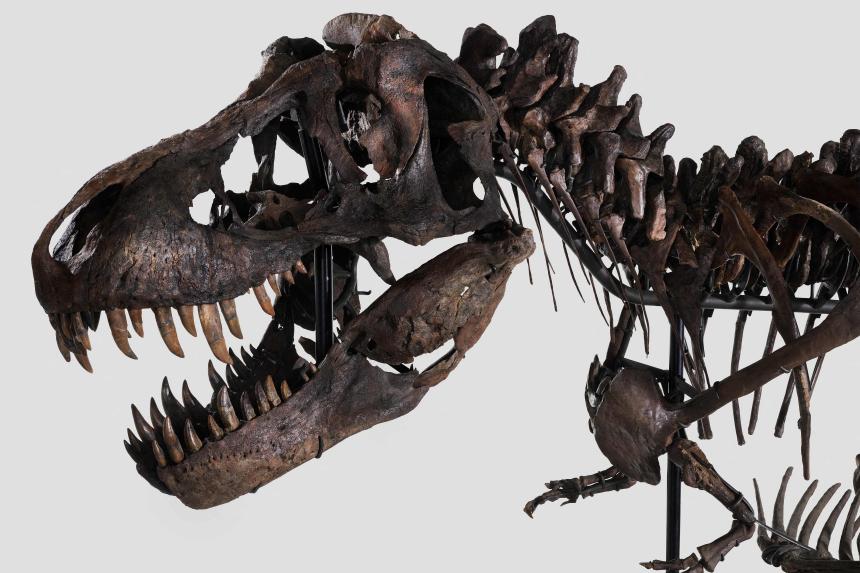Scientists are angry over plans to sell Trinity the T-rex to a private owner
First ever European sale of 67million-year-old T-Rex skeleton to go ahead next month
Your support helps us to tell the story
From reproductive rights to climate change to Big Tech, The Independent is on the ground when the story is developing. Whether it's investigating the financials of Elon Musk's pro-Trump PAC or producing our latest documentary, 'The A Word', which shines a light on the American women fighting for reproductive rights, we know how important it is to parse out the facts from the messaging.
At such a critical moment in US history, we need reporters on the ground. Your donation allows us to keep sending journalists to speak to both sides of the story.
The Independent is trusted by Americans across the entire political spectrum. And unlike many other quality news outlets, we choose not to lock Americans out of our reporting and analysis with paywalls. We believe quality journalism should be available to everyone, paid for by those who can afford it.
Your support makes all the difference.The first-ever sale of a tyrannosaurus rex skeleton in Europe could mean the fossils end up in a private collection, making it difficult for researchers to study them, scientists fear.
The 67 million-year-old skeleton, nicknamed Trinity, will go on sale at the Koller auction house in Zurich, Switzerland next month.
At 3.9 metres (12.8ft) tall, Trinity has been valued at between six to eight million Swiss francs (£4.5m-£7.2m).
Some experts believe the price tag could put Trinity out of the reach of most museums. They are concerned it will be sold to an ultra-wealthy buyer and join a growing list of scientifically invaluable fossils.
“The auction of Trinity is just the tip of a very ugly and sprawling iceberg where everyone who is interested in the natural world loses, from schoolchildren to scientists," Dr Thomas Carr of the Carthage College in Wisconsin, who tracks T-Rex fossils, told The Times.
Trinity, described by the auction house as "one of the most spectacular T-Rex skeletons in existence,” is made up of bones from three of the dinosaurs - one of the largest predators to ever walk the Earth.
The fossils were excavated between 2008 and 2013 from the Hell Creek and Lance Creek formations in Montana and Wyoming in the United States, Koller said.
The sites are known for the discoveries of two other significant T-Rex skeletons that have gone to auction.

Sue went under the hammer in 1997 for $8.4 million (£6.9m), and Stan, which took the world-record price of $31.8 million (£26.1m) at Christie’s, in 2020.
Koller said it could not disclose the current owner, saying only that it came from a private collection.
Professor Steve Brusatte, of the University of Edinburgh, said that Trinity was "a Frankenstein rex", with pieces mixed and matched from different fossils.
"Even so, these fossils are rare and scientifically important, and I feel they properly belong in a museum where they can be kept safe, studied by scientists, and inspire kids and members of the public of all ages," he said.
JP Morgan, John D Rockefeller and other America tycoons have been fascinated by dinosaurs ever since the 19th century when they funded fossil hunts.
More recently celebrities have fought over them. Nicolas Cage outbid Leonardo DiCaprio for a skull of Tyrannosaurus bataar - a relative of T-Rex - at an auction in Beverly Hills in 2007.




Join our commenting forum
Join thought-provoking conversations, follow other Independent readers and see their replies
Comments